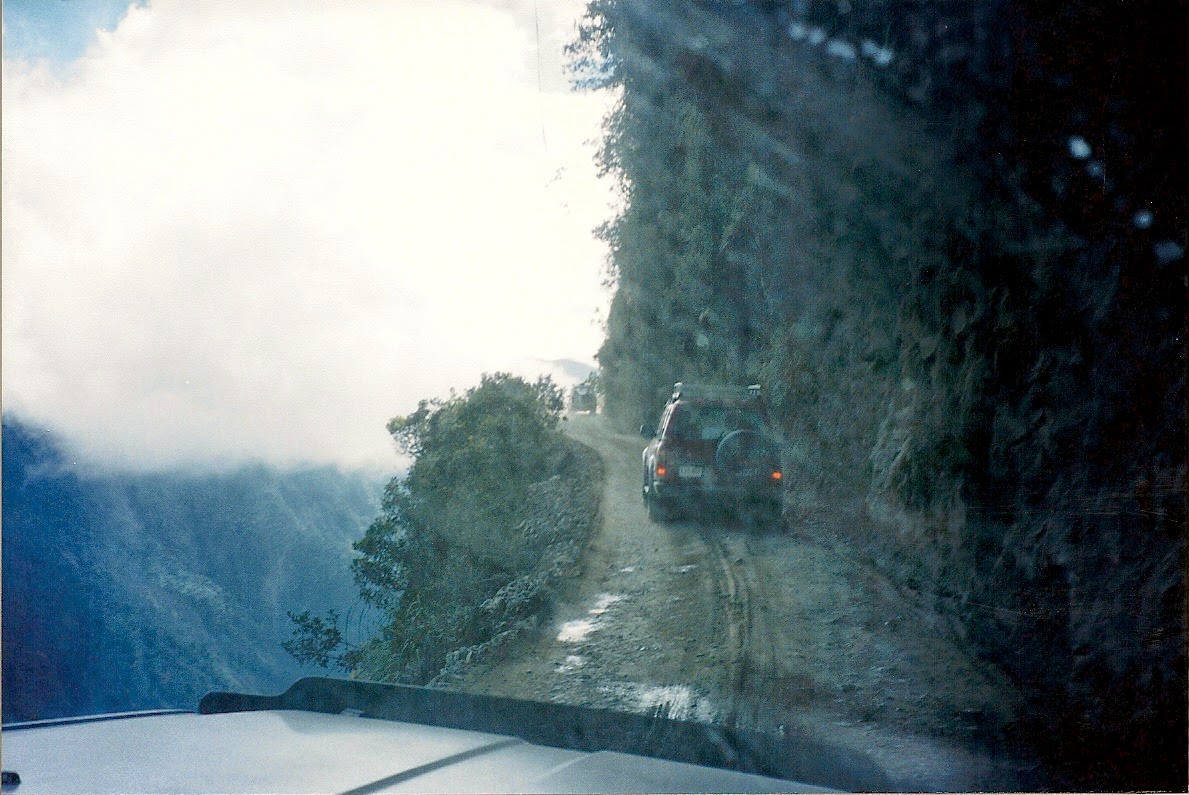Following just over two years in Bolivia, we were now on our way to experience life in a Peruvian colonial city at an elevation of nearly 8,700 ft. with a population of around 70,000. We were accustomed to living at a high elevation. I lived at around 11,000 ft in La Paz, a city with an estimated population of over 850,000 people. (At the mine site where Larry lived during the week, the elevation was around 12,000 ft.)
Once again, Larry had visited Cajamarca ahead of time and found us a place to live right smack dab in the middle of this bustling little city just a few blocks from the Plaza de Armas (city center).
Life was different here. La Paz was a very international city because of the embassies and non-governmental organizations so we didn't seem to "stick out" so much. Perhaps because of those embassies, La Paz had a large selection of great restaurants and a large grocery store that somewhat catered to food items expats missed from their native countries.
Cajamarca, on the other had, was filled with an indigenous population -- a people that weren't very tall. I didn't have a vehicle in Cajamarca so I walked or took a taxi. Traffic was chaotic and parking was hard to come by so even on weekends, with Larry home with his work truck, we still usually walked to the markets -- and we stood out.
Shopping was challenging. We'd visit the three main small grocery stores on our shopping days searching each one for a new product imported from the U.S. that would show up on their shelves (Campbell's soup and boxed macaroni and cheese - I actually forget the different food items we'd find and pay a lot of money for but I never cared -- it was comforting to find those familiar food labels from the U.S.) We would visit the meat store to order chicken breasts (boneless and skinless) and ground sirloin. I would have to order these items and then return later in the day or the following day - depending on how busy they were. We would then head for the fruit and vegetable market. Following those purchases, we then would visit the bread store. Last, we'd walk by a shop that sold flowers to buy a bouquet of roses from Ecuador -- I don't remember what we paid for them -- I just remember they were inexpensive and beautiful.
We lived in Cajamarca for just shy of two years. My saving grace during these two expat experiences was the ability to pursue an online liberal arts degree through Washington State University's distance degree program. My days were kept busy with my online classes, continued studying of Spanish, gathering with the other expat wives for different activities (shopping, lunch, crafts, etc.) and cooking - meal preparation seemed to require more for whatever reason.
The below picture is of Cajamarca. The countryside was beautiful. Cajamarca was a historical city in that it was here that the Spanish Pizarro tricked, captured and imprisoned for ransom and ultimately killed the Inca chief Atahualpa. Cajamarca was a major Inca city on the Inca Andean highway linking Cuzco and Quito in Ecuador.
The picture below is of the truck Larry used to drive to and from the mine. It is parked in front of the "garage" entrance to where we lived. This little guy came by every Saturday to wash Larry's truck.
The picture below is of the fruit and vegetable market.
The picture below was of the cathedral in the Plaza de Armas.
The picture below is of Larry at the mine site.
Larry played on the soccer team in the department he worked which occupied some of our Saturdays.
We experienced Carnival in Cajamarca too.
Whenever possible, we'd escape to Lima where there were better restaurants and shopping and just an escape from Cajamarca. The picture below is of a favorite Italian restaurant.
Larry's parents came to visit us in Cajamarca.
Following their short visit in Cajamarca, we then traveled to the Galapagos Islands.
We met some great people during our time in Peru.
Lisa was one of my favorite new people to meet. Bold woman that she is, she drove us to the coast for a long weekend get-away. We stopped along the way for lunch and these little fellows were intrigued by us foreigners so we recorded the event with a picture.
While we were living in Peru, as well as visiting the Galapagos Islands, we also traveled to Argentina to visit Iguazu Falls in the northern part of that country.
And then one day, Larry received a phone call from another mining company with an offer for a job which would bring us back to the U.S. Our first experience of living away from the U.S. was positive in that we were able to visit the many unique places in Bolivia, Chile, Peru, Argentina and Ecuador as well as the opportunity to visit Germany, Austria and Switzerland. We met so very many great people - many of whom we stay in touch with today. We experienced being a minority, living in a different culture and the necessity of learning another language. We also learned how much we appreciate the life we live in the U.S.
Our return to the U.S. took us first to Safford, Arizona, where we lived for two years. We then moved to Silver City, New Mexico, where we lived for two years and we then returned to the Safford area where we lived for two years at which time the company Larry was working for asked us to relocated to Calama, Chile. The opportunity to return to expat life following six years back in the U.S. appealed to us so off we went in October of 2008.











































































